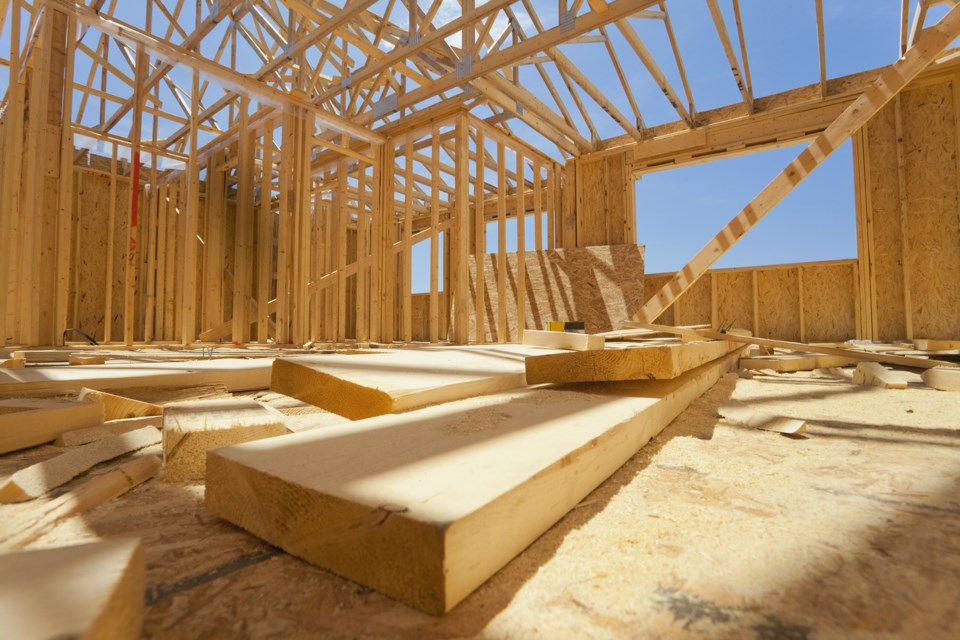OLDS — A strategy calling for a diverse range of housing, all the way down to tiny homes and even possibly homes built from shipping containers, was approved during the Town of Olds' July 14 council meeting.
Council discussed the new housing strategy as well as a housing assessment created by a B.C. company during its committee of the whole meeting the week previous.
“We want more diverse housing. We want more housing. And as simple as that is, it never existed before,” chief administrative officer Brent Williams told council.
Williams said a focus will be on developing infill lots in places like Uptowne Olds and East Olds with a goal of creating 100 units over the next five years.
He also noted that a 92-unit apartment building is slated to be built in Olds just south of the fire hall. Town officials expect to release more information about it this week.
- RELATED: Olds' housing strategy taking shape to meet demand
- RELATED: New report confirms Olds' housing shortage
Information presented in the housing needs assessment backed up the housing strategy.
Qualitative data analyst Lisa Moffat of B.C.-based Resilience Planning said their study indicated there’s a need to incentivize “diverse housing types” including apartment buildings with one, two or three bedrooms as well as tiny homes and secondary suites. Homes made out of shipping containers are also a possibility.
A secondary suite is a self-contained living space. It can be located in a single-family home or duplex or be an entirely separate unit, located in the backyard or above a garage, for example.
Moffat said the problem is especially acute for moderate to low-income people.
“We see many people spending more than 50 per cent of their income on housing utilities,” she said.
Moffat said another factor is elderly residents who want to move out of their larger homes into something smaller, but there are very few smaller housing options in Olds for them to choose from.
Williams said the housing strategy can not only provide housing for current residents but also attract new residents, thereby providing housing for employees of some local businesses as well as attract new residents, thus widening the pool of customers for those businesses.
Moffat said the lack of housing in Olds is so great that “some people are commuting 90 kilometres one way to get to work.”
“The strategy tries to lay some groundwork to we know what the problem is. That's the easy part. The hard part is trying to figure out how to address it,” Williams said.
“The (municipality's) not a developer. We rely on the private sector to build housing. And perhaps, as we go down the road and have conversations, say, around seniors housing and what does that transitory stage look like, we will involve people like Mountain View Seniors' Housing into those conversations.
“The housing strategy is basically a roadmap to create the things that the needs assessment says that we require, more diversity, more affordability, attainability.”
He said the plan involves input from not only council but also residents, developers and other stakeholders.
“I think the main job the Town of Olds can do is try to create the environment where people want to invest,” he added.
Williams said an impetus for creation of the housing strategy dates back to about 2023 when it looked like Olds College would see a surge of international students who would need some place to live. When the federal government changed the rules for admission of international students to lower the number permitted, that issue died out.
Williams said Town of Olds officials heard complaints about development delays. To help solve that problem, the municipality is going more into e-permitting to speed the process up.
He conceded that if the town really grows, that could create strains elsewhere, like the need for more infrastructure, police officers, doctors and other health-care employees as well as more schools.
“Those things are real and they have to be addressed. And we don't have a magic wand, nor an endless pot of money, nor is it all of our responsibility in terms of special health care or social services to mitigate all of that,” Williams said.
“But the strategy tries to recognize it, and as, should it be passed, and as we review it, implement it, reconsider it, we will monitor these things.”
Coun. Heather Ryan liked the fact that the plan is open to a wide variety of housing types.
“That's exactly what I would like to see, that flexibility in all areas,” she said.
Coun. Darren Wilson said some people who have moved here lived here “primarily because of the small town flavour and feel of Olds.”
He said the key will be ensuring that the housing strategy addresses the gaps in housing yet still keeps that small town feel.
“It's going to be execution,” he said. “And no disrespect intended, but how we roll this strategy out so we avoid creating favelas of the north is going to be key, right?
Favelas are slums or shanty towns at the edge of Brazil’s largest cities.
Williams agreed that it’s important to keep that small town character, adding that “respecting people's property rights is equally important.”
“Even in the land use bylaw review, we're not looking to create more high-density zones, just utilize the ones we have,” he said.
The committee voted to accept the housing assessment as presented and the housing strategy as information.



